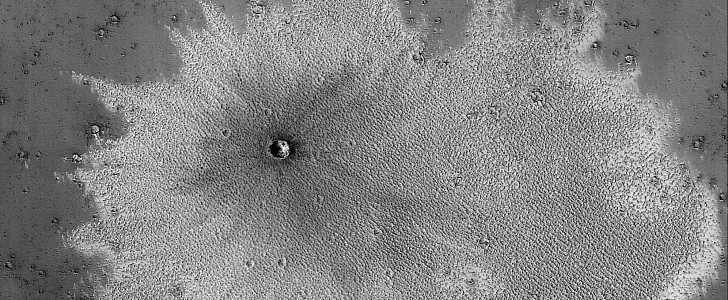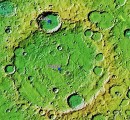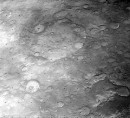No matter how fond we are of the Red Planet, we have to admit it will be a very dangerous place to live in, if we ever decide on such a course of action. And we are not talking about the lack of oxygen, the difficulties of growing anything in that soil, or some undiscovered alien beast.
Mars is one of the most heavily cratered places in our solar system, nature's favorite board for target practice. According to some very shaky but official estimates, there are close to 400,000 such scars of past suffering on the surface there, all more than one km (0.62 miles) in diameter. Compare that with the 120 craters or so we know of here on Earth.
There are, of course, reasons for this. First, Mars is much closer to the Asteroid Belt, the place where floating rocks generally congregate before deciding to head into the solar system. Secondly, Earth might have had a much larger number of such craters in the past, but an unstable crust, high erosion rates, active sources of lava, and even vegetation either destroyed most of them or concealed them from sight.
As it stands, Mars is sort of a time capsule, because, lacking all of the above, it was capable of preserving its craters pretty much in the same shape and form they had after the dust had settled in the wake of the strike.
There’s probably no better example of that than the image of the small crater we have here. Pictured by the HiRISE camera back in 2009, it resides in an undisclosed region of the planet, surrounded by a splash of material.
According to the scientists looking at these images, this is a relatively young crater (no estimate is given), “with dark rayed ejecta and a light-toned zone that extends beyond that ejecta.” They speculate “the bright ejecta consists of indurated fine materials, such as dust trapped by the roughened surface, then cemented over time.”
An impressive image to look at, and one that could help us better understand how the Martian soil behaves when hit.
There are, of course, reasons for this. First, Mars is much closer to the Asteroid Belt, the place where floating rocks generally congregate before deciding to head into the solar system. Secondly, Earth might have had a much larger number of such craters in the past, but an unstable crust, high erosion rates, active sources of lava, and even vegetation either destroyed most of them or concealed them from sight.
As it stands, Mars is sort of a time capsule, because, lacking all of the above, it was capable of preserving its craters pretty much in the same shape and form they had after the dust had settled in the wake of the strike.
There’s probably no better example of that than the image of the small crater we have here. Pictured by the HiRISE camera back in 2009, it resides in an undisclosed region of the planet, surrounded by a splash of material.
According to the scientists looking at these images, this is a relatively young crater (no estimate is given), “with dark rayed ejecta and a light-toned zone that extends beyond that ejecta.” They speculate “the bright ejecta consists of indurated fine materials, such as dust trapped by the roughened surface, then cemented over time.”
An impressive image to look at, and one that could help us better understand how the Martian soil behaves when hit.







